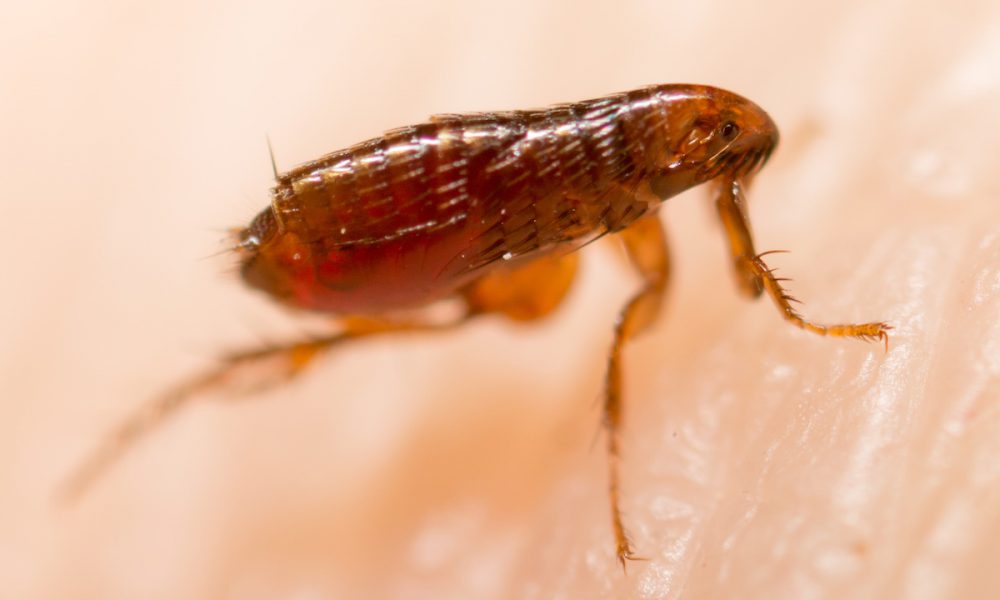
Did you know that there are an estimated 2,000 species of fleas worldwide, with more than 300 types found in the U.S.? Fleas are the most prevalent parasite found on fur-bearing animals with our dogs and cats included.
We are writing a series about the fleas that most affect us in the United States:
- Cat fleas
- Dog fleas
- Human fleas
- Rat fleas
What does a flea look like?
Fleas have three pairs of legs and are small, wingless, and flat insects. An adult flea is approximately 1/8 of an inch long (1 to 3 mm). They have biting mouthparts, and their color is dark reddish-brown. Because they move so quickly along a body, they can be tough to spot.
What do fleas eat?
Fleas diet includes any warm-blooded body, which also includes humans. They prefer to dine on hairy animals such as cats, dogs, rabbits, mice, rats, opossums, raccoons, and skunks.
Where do fleas live?
An adult flea uses its sturdy legs to jump onto a host. Once they land on an animal or human, they likely remain there at all times. While on an animal or human, the flea will feed, mate, and lay eggs. The eggs typically fall off of the animal or human host into the bedding, carpeting, blankets or the yard.
Dangerous?
Fleas can cause discomfort from their biting, but they can also spread the bubonic plague. In the 14th century, the bubonic plague killed one-third of Europe’s population. The good news is that there are only a few cases reported today.
Fleas can also spread diseases such as:
- Bacterial disease murine typhus, which is transmitted through infected rat to humans
- Tapeworm – fleas serve as an intermediate host for tapeworm
- Allergy dermatitis – Flea’s saliva can cause severe flea allergy dermatitis in dogs and cats
Prevention?
Here are a few tips to follow to prevent fleas from becoming an itchy nuisance or spreading diseases:
House
- Always maintain a clean home with proper sanitation
- Vacuum floors, carpets, and furniture frequently
- Wash bed linens regularly to remove any existing fleas and eggs
- Eliminate any rodents in and around the home which carry fleas
Pet Care
- Watch for excessive scratching and licking on pets’ coats where fleas attach themselves
- Bathe your pets after time outdoors or playing with other animals
- Wash your pet’s bedding, plush toys, and collars often
- Talk with your veterinarian about flea treatments
Removal of fleas?
Flea infestations can be challenging to keep under control since fleas can reproduce quickly. Over a lifetime, fleas can produce up to 400 to 500 offspring. Talk with your veterinarian to get the best method and product to treat your pet.
Contact a licensed pest professional immediately to assist with flea control if you find fleas in your home.
Please let our team of professionals help you. Don’t spend your valuable time dealing with things that we can handle for you. If you’re in any of the surrounding areas, give Proactive Pest Control a call at 770-800-PEST or 770-800-7378.
Contact Us
Choose Proactive Pest Control for professional, comprehensive, guaranteed pest, and lawn management. The pros at Proactive will work diligently to gain your trust, confidence, and your total satisfaction. CALL US TODAY at 770-800-PEST to schedule a free, no obligation inspection and evaluation for your home or business. Or, contact us for a FREE consultation. Let us show you why Proactive Pest Control is northeast Georgia’s first choice for pest, termite, and lawn services.